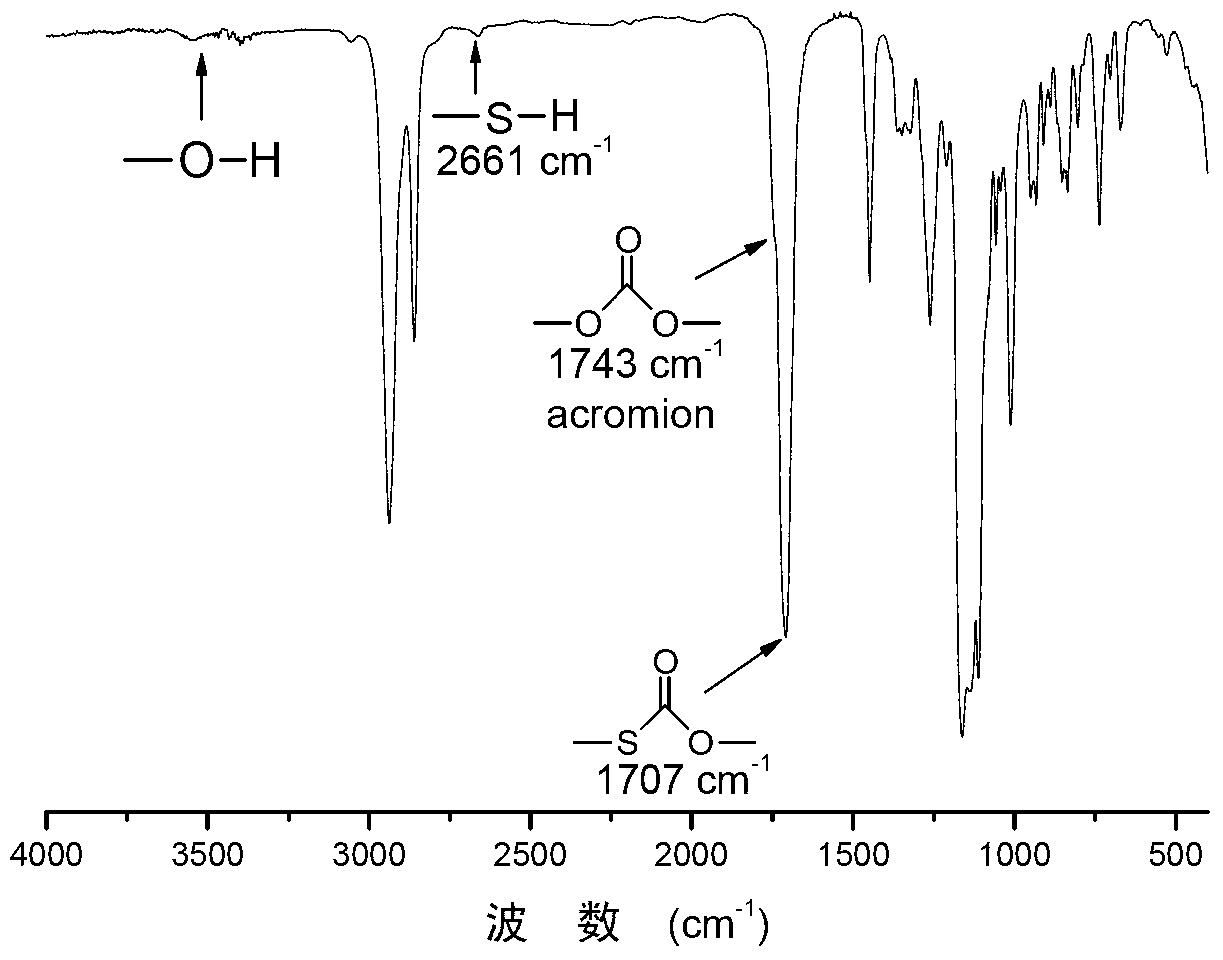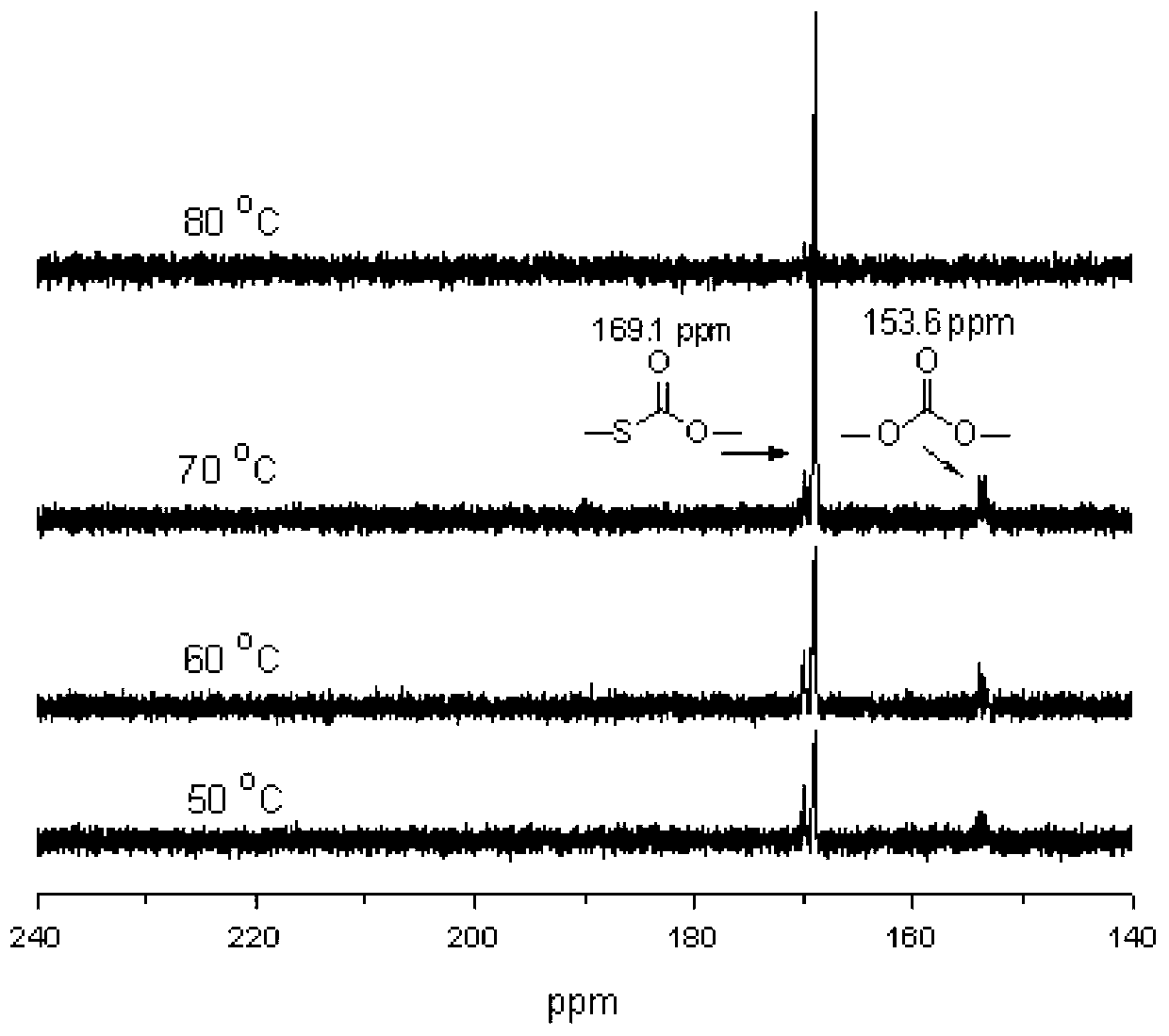Polythiocarbonate and preparation method thereof
A technology of polymonothiocarbonate and carbon oxysulfide, applied in the field of polymonothiocarbonate and its preparation, can solve the problems of lack of catalyst, inability to effectively inhibit oxygen-sulfur exchange reaction and the like, and achieve the effect of high catalytic efficiency
- Summary
- Abstract
- Description
- Claims
- Application Information
AI Technical Summary
Problems solved by technology
Method used
Image
Examples
Embodiment 1
[0034] Before the polymerization reaction, the 10 mL autoclave was vacuum-dried at 110° C. for 2 hours to remove water, and then cooled to room temperature. Add 1.0 mg of Zn-Co DMCC (catalyst addition is 0.01% of the total mass of epoxy monomers) to the reactor in turn, then add 2.0 mL of 1,2-propylene oxide (PO) and pass through the specified mass of COS (COS / PO molar ratio 0.5:1). Then the autoclave was closed and placed in an oil bath at 20 °C for 1 h under autogenous pressure. After the reaction was completed, it was cooled to room temperature, and the yellow product was taken out. First remove the solvent under reduced pressure, then use CH 2 Cl 2 The crude product was dissolved, the polymer was precipitated in methanol, and the yellow product was obtained after vacuum drying. The conversion rate was calculated by weighing method, and the content of each chain segment in the polymer was calculated by proton nuclear magnetic spectrum. The test results are shown in Tab...
Embodiment 2
[0036] Adopt the method of embodiment 1, the only difference is that the epoxide added is 1,2-epoxybutylene. The test results are shown in Table 2.
Embodiment 3
[0038] Before the polymerization reaction, the 10 mL autoclave was vacuum-dried at 110° C. for 2 hours to remove water, and then cooled to room temperature. Add Zn-Co DMCC (the amount of catalyst added is 0.05% of the total mass of epoxy monomers) to the reactor in sequence, then add 2.0 mL of isobutylene oxide, and introduce a specified mass of COS (COS / epoxy molar ratio 1:1). Then the autoclave was closed and placed in an oil bath at 60 °C for 1 h under autogenous pressure. Other treatments are the same as in Example 1, and the test results are shown in Table 2.
PUM
| Property | Measurement | Unit |
|---|---|---|
| Molecular weight | aaaaa | aaaaa |
Abstract
Description
Claims
Application Information
 Login to View More
Login to View More - R&D
- Intellectual Property
- Life Sciences
- Materials
- Tech Scout
- Unparalleled Data Quality
- Higher Quality Content
- 60% Fewer Hallucinations
Browse by: Latest US Patents, China's latest patents, Technical Efficacy Thesaurus, Application Domain, Technology Topic, Popular Technical Reports.
© 2025 PatSnap. All rights reserved.Legal|Privacy policy|Modern Slavery Act Transparency Statement|Sitemap|About US| Contact US: help@patsnap.com



